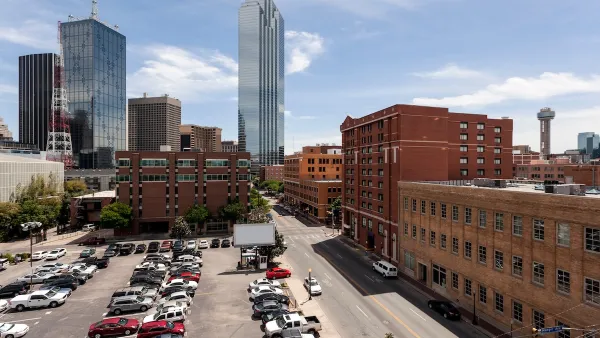Surveys of parking use in multifamily buildings across Cascadia have quantified the extent to which parking requirements have 'force fed' more spaces into projects than developers would provide based on demand. Alan Durning examines the implications.
"For more than half a century, cities have mandated oversized quotas of on-site parking at stores, offices, houses, apartments and condominiums, and all other types of new buildings—even bars," writes Durning in the fifth post in Sightline's "Parking? Lots!" series. "The result has been millions of parking stalls that stand empty even at their hour of peak demand. No doubt about it: we have legislated the waste of land."
"British Columbia and the Northwest states of Idaho, Oregon, and Washington have 2 million apartments, condominiums, and other dwellings in multifamily buildings, according to data from BC Stats and the US Census Bureau. For each of these dwellings, if the region has an extra 0.4 parking spaces, that’s 800,000 empties. Each space likely occupies at least 325 square feet of pavement, including access and maneuvering room. All told, that’s 260 million square feet of superfluous parking: more than 9 square miles of vacancy that, unlike mall lots, isn’t even useful for driver’s ed. It is, with apologies to T.S. Eliot, the waste land."
"Remember: that’s just the extra parking spots—the ones idle around 2 a.m.—and it’s only the excess parking at apartment and condo buildings," he adds. "It ignores the far-more numerous ones at single-family homes, on the street, at offices, factories, churches, schools, park-and-ride lots—and the malls where my kids have been practicing."
FULL STORY: Wide Open Spaces

Planetizen Federal Action Tracker
A weekly monitor of how Trump’s orders and actions are impacting planners and planning in America.

Map: Where Senate Republicans Want to Sell Your Public Lands
For public land advocates, the Senate Republicans’ proposal to sell millions of acres of public land in the West is “the biggest fight of their careers.”

Restaurant Patios Were a Pandemic Win — Why Were They so Hard to Keep?
Social distancing requirements and changes in travel patterns prompted cities to pilot new uses for street and sidewalk space. Then it got complicated.

Platform Pilsner: Vancouver Transit Agency Releases... a Beer?
TransLink will receive a portion of every sale of the four-pack.

Toronto Weighs Cheaper Transit, Parking Hikes for Major Events
Special event rates would take effect during large festivals, sports games and concerts to ‘discourage driving, manage congestion and free up space for transit.”

Berlin to Consider Car-Free Zone Larger Than Manhattan
The area bound by the 22-mile Ringbahn would still allow 12 uses of a private automobile per year per person, and several other exemptions.
Urban Design for Planners 1: Software Tools
This six-course series explores essential urban design concepts using open source software and equips planners with the tools they need to participate fully in the urban design process.
Planning for Universal Design
Learn the tools for implementing Universal Design in planning regulations.
Heyer Gruel & Associates PA
JM Goldson LLC
Custer County Colorado
City of Camden Redevelopment Agency
City of Astoria
Transportation Research & Education Center (TREC) at Portland State University
Camden Redevelopment Agency
City of Claremont
Municipality of Princeton (NJ)





























